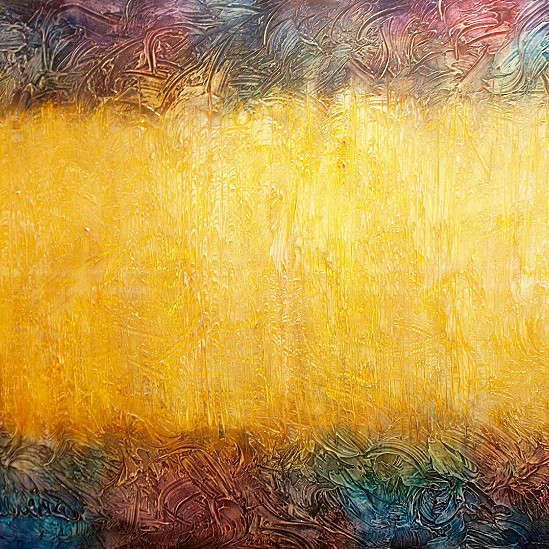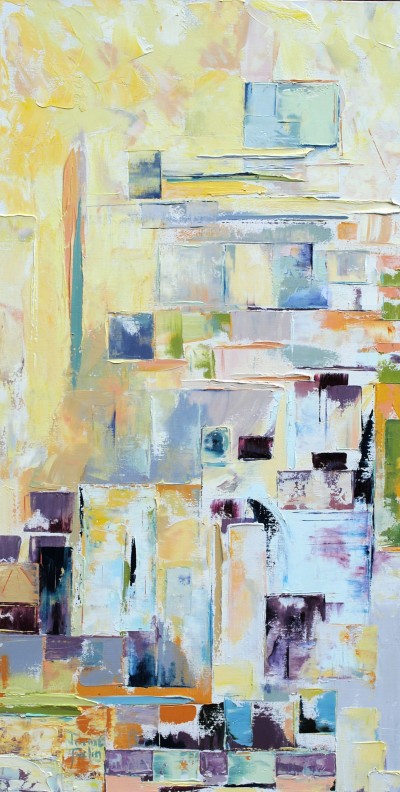November / December 2012
Fernando DeOliveria,
Abstract / Acrylic on canvas
Fernando DeOliveira grew up in Brazil and moved to the United States in 2000. After working as an art dealer and painter for several years, DeOliveira decided to dedicate his full attention to painting. In Boston he attended the CONTINUING EDUCATION Program at SMFA and has participated in solo and group shows internationally. Color and texture are the main connections between the viewer and the artist. Though the images are abstract, tangible feelings are provoked, which despite appearances are based on a rational structure, and bring the viewer inside his pictorial world.
Joanne Tarlin
Abstract/ Oil on canvas
Joanne Tarlin’s abstract paintings explore the human condition and portray her fascination with its complexity. Contemplating desire, fear, joy and death, Joanne “detaches” herself and becomes enveloped in their emotional essence. Her comprehension of those fundamental elements of our humanity speaks on the canvas through the dynamic selection of shape, color and texture. Reds scream. Swooshes soar. Cool grays calm. Dark spaces beg exploration.
Lois Fiore
Abstract/ Oil on canvas
Photography/ A trip to Rom
Her painting are based on the people and situations that mean to her, that affect her the most. And she tries to bring to them as much emotional clarity as possible.
Verne Yan
Handmade Silk Embroidery
Hand silk embroidery is one of excellent traditional Chinese craft over 2500 years history. Art technique for embroidery is consisting of pulling colored silk threads through a silk screen patterns and words that have been preciously designed on the background.
John Lovosco
Screen-print series, Calculations
His working method is intuitive and his screen-prints are meant to be a working method to experiment within a designated framework, not to make editions of the same image. Although screen-printing is usually used for homogeneous, predictable, commodity – like applications, he turn that on its head, using the screen printing process for its fluidity, which allows for painterly and unpredictable results.
Hassan Sarbakhshian
Photographer
Hasan Sarbakhshian is among Iran’s most esteemed photographers and documentary film makers, having served as a photographer for the Associated Press for over a decade. Hasan’s work covers a diverse range of themes. His photographs have appeared in the New York Times, Washington Post, Newsweek, Time, Economist and many other international newspapers and magazines. As a journalist he was affiliated with the Zanan Monthly Magazine, the Photo Agency of the Cultural Heritage News Agency (CHN), Yas-e-No Daily Newspaper, Payam-e-Emrouz Monthly Magazine, Hayat-e-No Daily Newspaper, and the Sobh-e-Emrouz Daily Newspaper. Hasan has been the recipient of numerous awards, both in Iran and internationally, and he has served as a curator and juror in many international competitions and festivals.
Kim Radochia
Sculptures/ Energy Wisps
…The work is a continuation of a series of drawings she did using smoke as a medium which are also included in this show. The smaller framed drawings were made in France while at an artist residency last September as was the beginning of this sculptural installation. Her studio was overlooking the Seine River and this inspired her to create smoke and water drawings using a candle flame and the river water. She is intrigued by the immediacy of experience and how this might be reflected in the creative process…
Susan Varga
Ceramic/ Carnival in Venice
Susan Varga was born and raised in Budapest, Hungary, where the Viennese-Hungarian Art Nouveau style was an early influence. Her work features decorative, elegant figures amidst gilded patterns. Strong colors, maroon, black and gold luster contrast with the natural white clay in the faces and hands of the figures. She builds her ceramic objects in a traditional manner, forming vases, bowls and platters on a potter’s wheel. Because of their large size, the vases and bowls must be formed in sections on the wheel and later assembled in a unified piece. After the first firing, the pieces are sanded and elaborate paintings are applied to fill all spaces on the vessels.
First, Varga studied at The University of Architecture and Engineering, Budapest and became an architect. In 1964, she moved to New York and received a Masters Degree in Architecture from Columbia University. Working in the New York office of prominent architect, Marcel Breuer, she eventually found her interests and directed her energies to painting. Later, she moved to Boston where she completed a graduate degree in Art Education and Ceramics at The Massachusetts College of Art. Since 1990, her ceramics have been exhibited in prestigious galleries in Budapest, Vienna, and throughout the United States. Recently retired from a 25-year teaching career in the Newton Public School System, she now enjoys painting Cape Cod scenes in oils and pastels.


